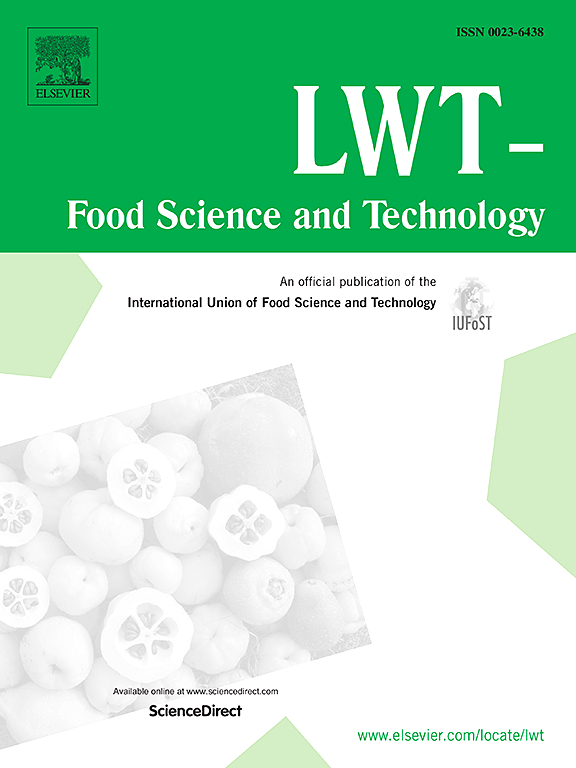The juice incorporation from grape pomace pressing positively influence the yield and chemical composition without affecting its sensory profile
IF 6
1区 农林科学
Q1 FOOD SCIENCE & TECHNOLOGY
引用次数: 0
Abstract
The quality of juice obtained by pressing grape pomace and the viability of its incorporation into whole grape juice was investigated for the first time on an industrial scale. Two pressing systems were tested: hydraulic and pneumatic and the evaluated treatments were as follows: whole grape juice (CJ - control), juice 100% from hydraulic press (HP), juice 100% from pneumatic press (PP), juice with a blend of 87% CJ + 13% HP (CJHP), and 87% CJ + 13% PP (CJPP). Analyses were conducted to determine the physicochemical profiles of the juices, levels of primary and secondary metabolites, antioxidant capacity, sensory profile, and consumer acceptability. Pressing increased the yield in the hydraulic and pneumatic systems by 20.5% and 27.3%, respectively, the concentration of phenolic compounds, especially flavanols, flavonols, and stilbenes, and the antioxidant capacity. However, HP and PP juices obtained the lowest overall sensory acceptability scores compared with the control, whereas CJPP and CJHP did not differ from CJ. The pneumatic press stood out for providing better results in juice quality and yield. In this study, the incorporation of juice from pressing grape pomace collected during the maceration stage positively influenced the product's chemical composition without altering its sensory profile or negatively affecting its acceptance by consumers.

求助全文
约1分钟内获得全文
求助全文
来源期刊

LWT - Food Science and Technology
工程技术-食品科技
CiteScore
11.80
自引率
6.70%
发文量
1724
审稿时长
65 days
期刊介绍:
LWT - Food Science and Technology is an international journal that publishes innovative papers in the fields of food chemistry, biochemistry, microbiology, technology and nutrition. The work described should be innovative either in the approach or in the methods used. The significance of the results either for the science community or for the food industry must also be specified. Contributions written in English are welcomed in the form of review articles, short reviews, research papers, and research notes. Papers featuring animal trials and cell cultures are outside the scope of the journal and will not be considered for publication.
 求助内容:
求助内容: 应助结果提醒方式:
应助结果提醒方式:


